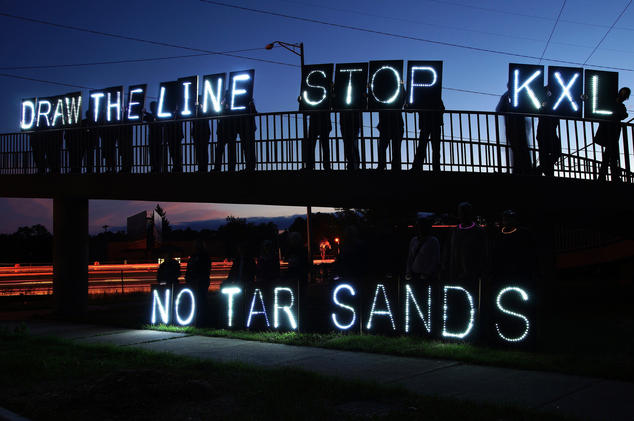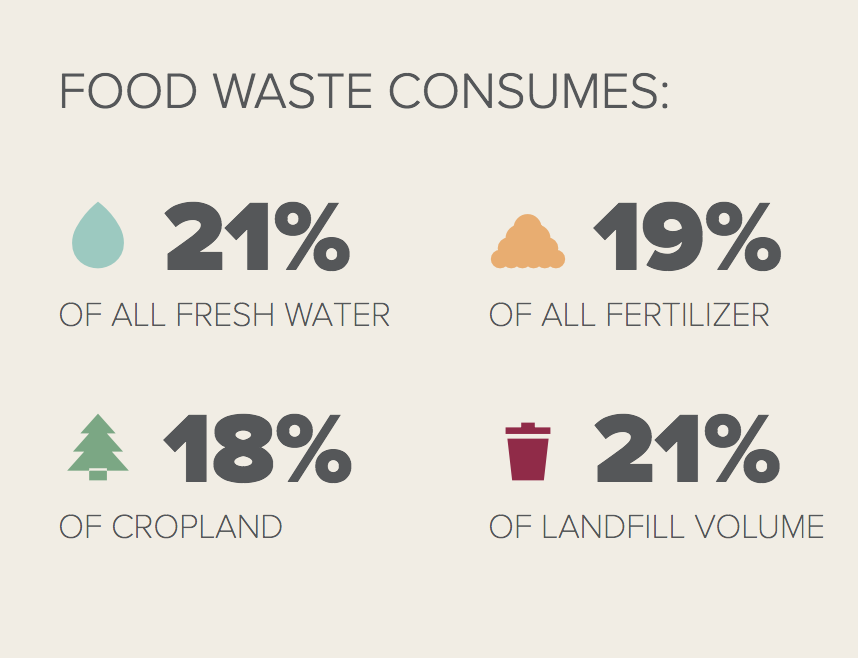In an attempt to stop the Keystone XL pipeline, resistants launched a campaign as clever as it is environmentally sound. (And it sure beats the heck out of 220,000-gallon oil spills like the one Nov 16th.)
Ranchers and farmers in Nebraska built solar arrays in the proposed path of the pipeline, on lands the state could be forced to expropriate and sell to TransCanada, whose project Keystone XL is, should TransCanada win the permitting to build in Nebraska.
The campaign, a collaborative effort of Bold Nebraska, 350.org, Indigenous Environmental Network, CREDO (the activist mobile phone network), and Oil Change International, has produced an 8-minute documentary, telling the stories of the people building the solar arrays as an act of resistance: “putting clean energy solutions in the path of the problem,” as the film’s trailer notes.

The pipeline can’t be built without the state-sanctioned construction permits. The coalition of farmer and ranch families, indigenous peoples and local Nebraska activist groups, have lobbied Nebraska’s Public Service Commission to deny the permit.
TransCanada said in a statement that it would review the decision to determine next steps for Keystone XL, but added that it believed the project remained economically viable.
“It is important to remember that this project has widespread support within the U.S. and Canadian federal governments, as well as state officials in Montana, South Dakota and Nebraska,” the company said. – via Reuters [read more]
Nineteen nations, the Powering Past Coal Alliance, led by the UK and Canada, have committed to phasing out coal—the operative word: ‘quickly’—a clear indication that the dirtiest ‘fossil fuel’, which at present helps generate 40% of the planet’s electricity, is slated to fade into history.
Case in point: in the UK, the first country to publicly commit to ending coal use (by 2025) has already eliminated all but 2% of power generation via coal—down from 40% of national capacity just five years ago. The alliance, which intends to deploy both financing and collaborative technologies to eliminate “unabated coal”—coal-fired plants where carbon dioxide isn’t captured.
This is an astonishing pace of change; even in the US, Canadian environmental minister Catherine McKenna noted, the renewable energy sector employs some 250,000 people, versus but 50,000 in the coal industry. “This is the clean growth century,” she said. “The market has moved on coal.”
Canada itself isn’t without holdouts: the big wins—at considerable consumer cost—have been in Ontario but Alberta, Saskatchewan, Nova Scotia and New Brunswick aren’t yet fully onside; Saskatchewan has flat out refused to diminish coal use, while the other three, led by Alberta, are slowly aligning around a phase-out.
In allied news, the Cool Effects project is quietly developing all manner of human-scale technologies to diminish carbon levels in the earth’s atmosphere. Here’s a truly compelling overview of what small changes can induce.
With files from guardian.co.uk, Canadian Press and TriplePundit

For More Stats Visit rfed.com
Around here we’re conscious of the megatons of eminently wearable clothing in North America’s landfills. Another concern is wasted food, Americans throw away 27 million tons of food every year. What that does to landfills already clogged with the other leftovers of our consumer culture is breathtaking.
Some 1,100 sampled households in Nashville, Denver and NYC generated not just greenhouse gases from putrefying food in their local landfills but some 3.5 pounds of food per week per person. About a third of that wastage is inedible (but compostable) stuff like banana peels, apple cores and bones. Researchers went through garbage bins of sample households, discovering that nearly a quarter of the discarded food was prepared, cooked and, often, bought prepared fast food.
Bottom line? That Tupperware full of Tuesday’s leftovers is the end-product of two modes of eating unconsciously – overlarge portions and boredom.
It’s also, costing the US economy approximately $140 *billion* every year. That’s a whole lot of schools and bridges and hospitals!
Here’s the deal: sustainability—the mindset that all human value extraction from the planet has limits—is no lightweight thing. Like weight loss or weightlifting or sitting down to do your taxes or that term paper, ‘thinking sustainable’ is an active discipline. It doesn’t just *happen.*
And discipline isn’t passive: you have to learn how to make a habit stick.
The good thing is that there’s a quiet revolution underway, with curriculums all over the world integrating sustainability as mindset.
How’s that work? The twin biggies are ‘systems thinking’—thinking about the entire system when tackling a single problem—and collective/collaborative approaches to problem-solving.
Want a better, more liveable, more equitable planet? Then teach yourself, your kids and your colleagues to think 360º and collaborate around sustainability.
Fashion programs from Ryerson’s to London College of Fashion centre their design focus on renewable processes and ethical choices: simple as that. Chefs’ schools are on the same page: buy locally, buy sustainably and know the provenance of what you’re buying.
The best research on sustainability? Wait for it: try the insurance companies who’re trying to figure out what homeowners’ policies in Florida look like in ten years. Why? Insurance companies want to be sustainable—in business—in a decade too.
Face it: sustainability is all about survival and resiliency and thinking local. And those three qualities are habits of mind, whatever your age or outlook.
We all know this: the state of play around sustainable best practices in the clothing industry has changed radically. The average consumer isn’t maniacal about transparently sourced materials and humane best labour practices—it’s not a deal breaker, not yet—but the spirit of “need to know” has certainly taken hold.
goodmustgrow.com, a marketing data company, tracks these things. Since 2013, when almost two in three consumers believed in preferentially buying from “socially consciousness” companies; it’s 2017 and the percentage is closing on three out of four consumers—and climbing.
Back in the day, coffee had remarkably similar issues to transition: small, ethical producers struggled to find market share against the giants like Nestlé. Coffee farmers tried for decades to find the right formula; Fair Trade coffee changed the game, breaking the coffee giants stranglehold on the market—Nestlé’s buy-in was one key to the Fair Trade success—leading to an explosion in what was essential “craft coffees,” tracked like “appellation contrôlée” wines, champagne and prosecco.
Provenance, in short, was a brand: I know the coffee I drink comes from a Nicaraguan hacienda where the family-owners have for decades treated their workers exceptionally well. I rarely buy elsewhere because I know what I’ve bought: organic, no pesticides, happy workers. My coffee’s brand is its provenance.
Cotton is undergoing the same brand/transparency transformation. Pesticide-free cotton means other plants can be grown in the cotton rows, a gain for eco-diversity; organic means no fossil fuel-derived fertilizers, another win.
So what’s happening here? Provenance—traceability and transparency—is nothing more than the story behind the garment.
And that story shares like crazy, not least because folks buying clothes now act on their sense of a company’s honourability.
Ask questions. Research. Push for change.
Ryan Lobo and Ramon Martin of Tome are two Australians who share an outstanding sense of what women really want to wear. Inspired by icons like Madonna and Pina Bausch, Tome’s creative leads have seen their business grow impressively since 2012, they’re also equally impressively committed to sustainable best practices.

In 2014, Lobo and Martin bootstrapped The White Shirt Project, an initiative that dedicates proceeds from sales of select shirting to Freedom For All; FFA works to end slavery and human trafficking around the world.
You’re a part of the CFDA + Lexus Fashion Initiative, whose goal is to help brands to embrace and grow sustainable practices within their company. In what ways did you embrace sustainable and ethical practices for your SS17 collection?
T: Sustainability has become almost second nature to us at this point and it really runs top to bottom through the business. Choosing from sustainable fabrics is an obvious first step but production choices are a big part of the puzzle too. The single biggest commitment we make as a business is producing everything here in NYC under one roof which has a huge impact, especially in reducing pollution.
Does consideration for sustainability change the way you approach the design process, if so, how?
T: It’s more of a production consideration, to be honest. We try to keep the design as unfiltered and focused on our woman as possible and then move downstream from there. Where sustainability really comes into play is with fabric choices and how you choose to bring those designs into the world. Many people don’t realize that fashion is the 2nd most pollution industry globally after fossil fuels so the pressure is on to address this at every level of the business. One of the things that keeps us really efficient is producing everything here in NYC. When you have a closeness to the collection and an immediacy with production, you bypass a lot of wastage, especially transport costs, which can be huge for designers who produce offshore.
Do you have any advice for young designers who want to create beautiful collections that are sustainable?
T: Do your research. Sustainable solutions are 100% out there but are usually never presented to you as your first option. Keep looking, ask more questions and don’t compromise.
Zurich stands No. 1 on Arcadis’s 2016 Sustainable Cities Index; the Swiss banking capital has pioneered sustainable building design for decades—the Prime Tower boasts 30% less energy consumption than any other comparable building in Europe.
How? Minergie design principles are integrated into every major building project, skyscrapers and residential households alike—a common sustainability code for the entire country, an everyday best practice for responsible and responsive design thinking.
We like it.
Last night the Brands for Canada team was at Toronto City hall for the Startup Fashion Week (SFW) preview party. We have been the charity partner since the inaugural event in 2014. Startup Fashion Week is a not-for-profit event production founded in Toronto by Jodi Goodfellow.

This year Brands for Canada will be hosting the Eco Forum. We’ll be sure to keep you posted about tickets and timetables as they come available.
For more information on Startup Fashion Week visit startupfashionweek.com and follow @startupfashionweek on Instagram.
Thank you goes out to MSL Canada for donating 2 skids of men’s and women’s personal items. Their donation helps make a difference in the lives of a wide range of Canadians including the homeless, abused women and children, at-risk youth, immigrants and refugees, people with physical or mental disabilities, and people enrolled in job training or job search programs.
We love working with MSL Canada, they’re an award winning a PR agency, built on a foundation of collaboration. Recently named the ‘Most Honored Organization‘ at the Stevie Awards with 55 wins, including 14 Gold Stevies.
Proud to be named as the Most Honored Organization by @TheStevieAwards. Congrats to all our contributors & clients. https://t.co/DMKsvlZAep pic.twitter.com/VGFRtEj11i
— MSL (@msl_worldwide) August 24, 2017
This week we were at Apparel Textile Sourcing, Canada’s Premier Apparel & Textile International Sourcing Trade Show. It was held at The International Centre and featured sessions and speakers related to Trade Agreements, Global Supply Chain & Retail Panel, Global Design & Consumer Apparel Trends, more.
Our very own Helen Harakas was on a panel speaking about how sustainable action can eliminate poverty. Hit play below for a short clip!
The show also featured Fashion Meets Function: The ATSC Fashion Show. The show’s theme was ‘Evolution in Fashion’ where we saw fashion from the perspective of the student.